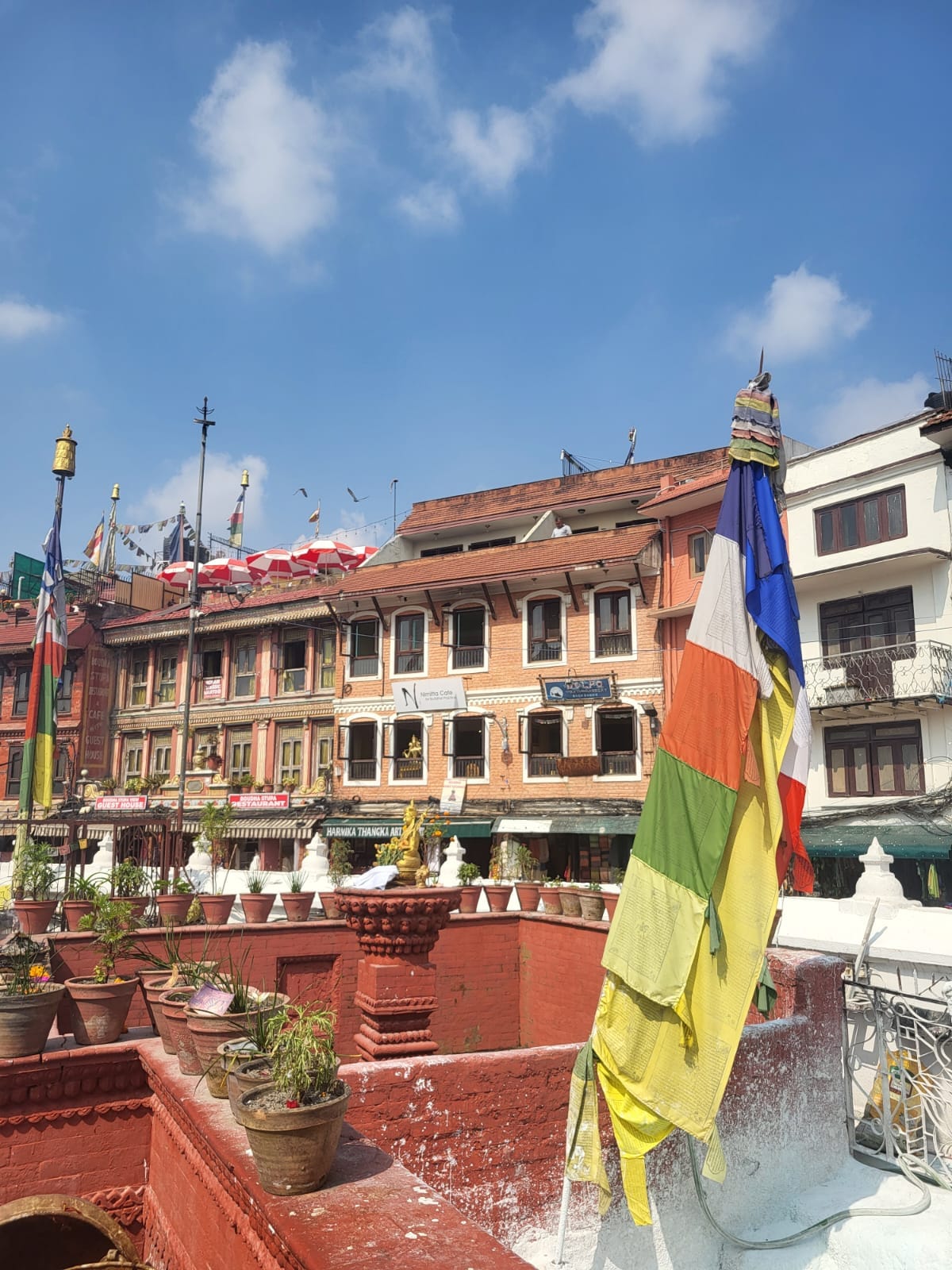First Steps in Kathmandu
We arrived in Kathmandu, the capital of Nepal. We shared a cab with another tourist to the outskirts of Thamel - the backpacker area. Some peace after a turbulent departure in the most chaotic city I've ever visited.

Namaste – It was a Nepalese greeting. It meant: The light within me bows to the light within you. – Jennifer Donnelly
We arrived at our hotel in the heart of Kathmandu, the city humming around us with life, dust, and diesel. This would be our base for the coming days before we ventured into the Himalayas. The rooms weren’t ready yet, so we left our luggage behind the front desk and stepped out into the unknown.
The moment the hotel doors closed behind us, we were hit by the sensory overload of Kathmandu: a pungent mix of car exhaust, incense, and street food smoke swirled through the air. It was only a 3.5-hour time difference from Cambodia, but after a sleepless night of travel, the disorientation was absolute. Our heads felt floaty, our bodies heavy, and my stomach growled louder than the honking cars that zigzagged through the narrow roads.
We were starving, yet it wasn’t even five p.m., and most eateries hadn’t opened their doors yet. We wandered, dodging potholes and rickshaws, past storefronts lined with trekking gear, prayer wheels, and faded signs in three languages. The buildings leaned into the streets, weathered and covered in layers of dust, decorated with prayer flags.

By 5:30 p.m., we finally stumbled upon a small restaurant tucked between a souvenir shop and a money exchange booth. The smell alone—ginger, cumin, garlic—drew us in. We ordered our first Nepali dumplings, momos, and devoured them. We would return here several times over the following days—it became a kind of sanctuary amid the chaos.
Dinner became our first real moment of calm. The Wi-Fi worked (surprisingly well), and we checked in with our team back in Cambodia, catching up on questions and logistics. I ordered Dhal Bhat, after the momos, a traditional Nepali dish I’d heard about, and asked the waitress how to eat it. She smiled and told me to mix everything together and eat with my hands—a process that felt both primal and intimate.
The restaurant itself was a warm escape. Painted portraits of snow-capped peaks lined the walls, alongside faded photos of trekkers grinning at base camps. Colorful prayer flags fluttered gently from the ceiling fans, giving the space a soft, sacred energy. Our waitress, kind-eyed and wearing a bright pink shawl, told us she came from a remote mountain village. Her whole face lit up when she learned we were headed to Everest Base Camp. She shared advice with us as if we were family—what snacks to pack and what to do when altitude sickness strikes.
The food took forever to arrive—something we later learned was standard in Nepal, where “fast food” is a myth—but it was worth the wait.

My first impression of Kathmandu was a clash of beauty and hardship. Pollution cloaked the city like a grey veil. The air was thick with dust, kicked up by motorbikes that weaved through crowds like schools of fish. Unfiltered fumes poured from every vehicle—cars, buses, motorbikes—racing through the cramped lanes in a wild, unchoreographed dance. The soundscape was relentless: a cacophony of honks, calls, and the metallic rattle of engines.
Despite having spent years in Cambodia, where poverty is a daily sight, Kathmandu struck a different chord. It felt more visceral here. Sidewalks crumbled into slums, and families cooked over open flames beside piles of rubble and tarp. On our walk to the restaurant, we passed through neighborhoods where the air felt heavier, the eyes sharper. It wasn’t threatening, but it wasn’t comfortable either.
After dinner, the city had darkened. Streetlights flickered, casting uneven light on the broken pavement. This time, we took a different route back, avoiding the more precarious streets we had walked earlier. The fatigue hit hard. A mix of jetlag, travel exhaustion, and full bellies had our legs moving on autopilot.
We reached our hotel and sank into bed; the mattress was hard, but somehow perfect. Outside, the horns still echoed through the night. But for the first time in nearly two days, I fell into a deep, uninterrupted sleep.